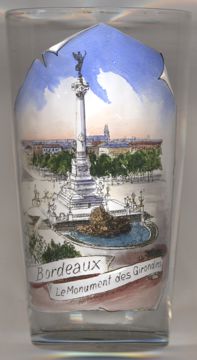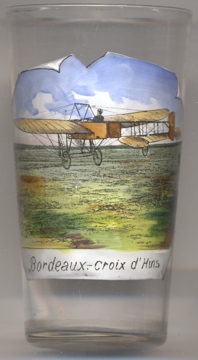

|
| FRANCE | FRANCE |
| région: Nouvelle-Aquitaine | |
| département: 33, Gironde |
Bordeaux is situated on a bend of the river Garonne, about 45 km before the Atlantic coast. The municipality proper has a population of about 257,800 (2019). Bordeaux is the centre of Bordeaux Métropole that has a population of about 796,300 (2019), the fifth-largest in France after Paris, Lyon, Marseille and Lille with its immediate suburbs and closest satellite towns. The larger metropolitan area has a population of about 1,248,000 (2017). It is the capital of the région Nouvelle-Aquitaine, as well as the préfecture of the département Gironde.
Around 300 BC, the region was the settlement of a Celtic tribe, the Bituriges Vivisci, who named the town Burdigala. The city came under Roman rule around 60 BC, and it became an important commercial centre. After being sacked by the Vandals in 276, attacked again by them in 409, the Visigoths in 414 and the Franks in 498, the city fell into a period of relative obscurity. In the late 6th century the city re-emerged as the seat of a county and an archdiocese within the Merovingian kingdom of the Franks. During the last stage of the war against Aquitaine (760–768), it was one of the last important strongholds to fall to the troops of King Pepin the Short. From the 12th to the 15th century, Bordeaux flourished once more following the marriage in 1152 of Eléonore, Duchess of Aquitaine and the last of the House of Poitiers, to Henry II Plantagenet, Count of Anjou and the grandson of Henry I of England, who succeeded to the English crown months after their wedding, bringing into being the vast Angevin Empire, which stretched from the Pyrenees to Ireland. In 1462, Bordeaux created a local parliament. Bordeaux adhered to the Fronde, being effectively annexed to the Kingdom of France only in 1653, when the army of Louis XIV entered the city. The 18th century saw another golden age of Bordeaux. The 'Port of the Moon' supplied the majority of Europe with coffee, cocoa, sugar, cotton and indigo, becoming France's busiest port and the second busiest port in the world after London. At the beginning of the French Revolution (1789), many local revolutionaries were members of the Girondists. In 1793, the Montagnards came to power. Fearing a bourgeois misappropriation of the Revolution, they executed a great number of Girondists. During the purge, the local Montagnard Section renamed the city of Bordeaux Commune-Franklin in homage to Benjamin Franklin. From the Bourbon Restoration, the economy of Bordeaux was rebuilt by traders and shipowners. The shipping traffic grew through the new African colonies. In 1870, at the beginning of the Franco-Prussian war against Prussia, the French government temporarily relocated to Bordeaux from Paris. That recurred during World War I and again very briefly during World War II, when it became clear that Paris would fall into German hands. In 2007, 40% of the city surface area, located around the Port of the Moon, was listed as World heritage sites by UNESCO. (See list of other UNESCO world heritage sites depicted on glasses of this collection.)

The  Monument aux Girondins [left, no. 3993] on Place des Quinconces commemorates the Gironde deputies
who fell victim to terror during the French Revolution. It is a memorial column in the style of historicism, which is surrounded by richly decorated
allegorical groups of figures. The memorial dates from 1894–1902. During the World War II, the groups of figures cast in metal at the foot of the
column were dismantled to be melted down. However, they reappeared after the end of the German occupation and have been part of the monument again since
1983. Since 2004, the Girondist monument is registered as a Monument historique in the French list of monuments.
Monument aux Girondins [left, no. 3993] on Place des Quinconces commemorates the Gironde deputies
who fell victim to terror during the French Revolution. It is a memorial column in the style of historicism, which is surrounded by richly decorated
allegorical groups of figures. The memorial dates from 1894–1902. During the World War II, the groups of figures cast in metal at the foot of the
column were dismantled to be melted down. However, they reappeared after the end of the German occupation and have been part of the monument again since
1983. Since 2004, the Girondist monument is registered as a Monument historique in the French list of monuments.

Glass no. 4126 [near left] is labeled as a souvenir from Bordeaux, but in fact shows a view of the airfield of
Croix d'Hins, about 24 km southwest of Bordeaux. (For description see there).
[https://en.wikipedia.org/wiki/Bordeaux;
https://de.wikipedia.org/wiki/Monument_aux_Girondins]
![[scale]](lineal.jpg)